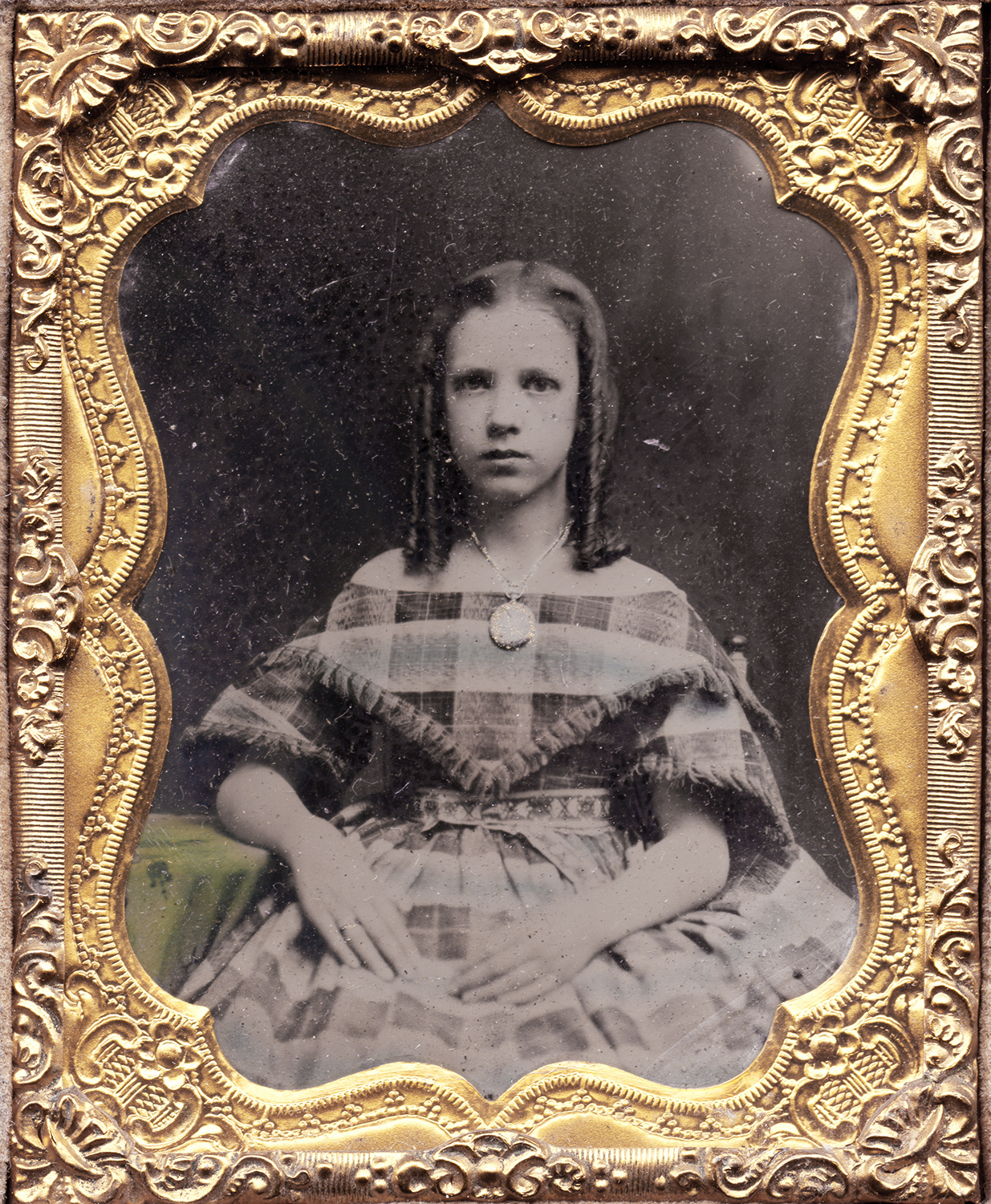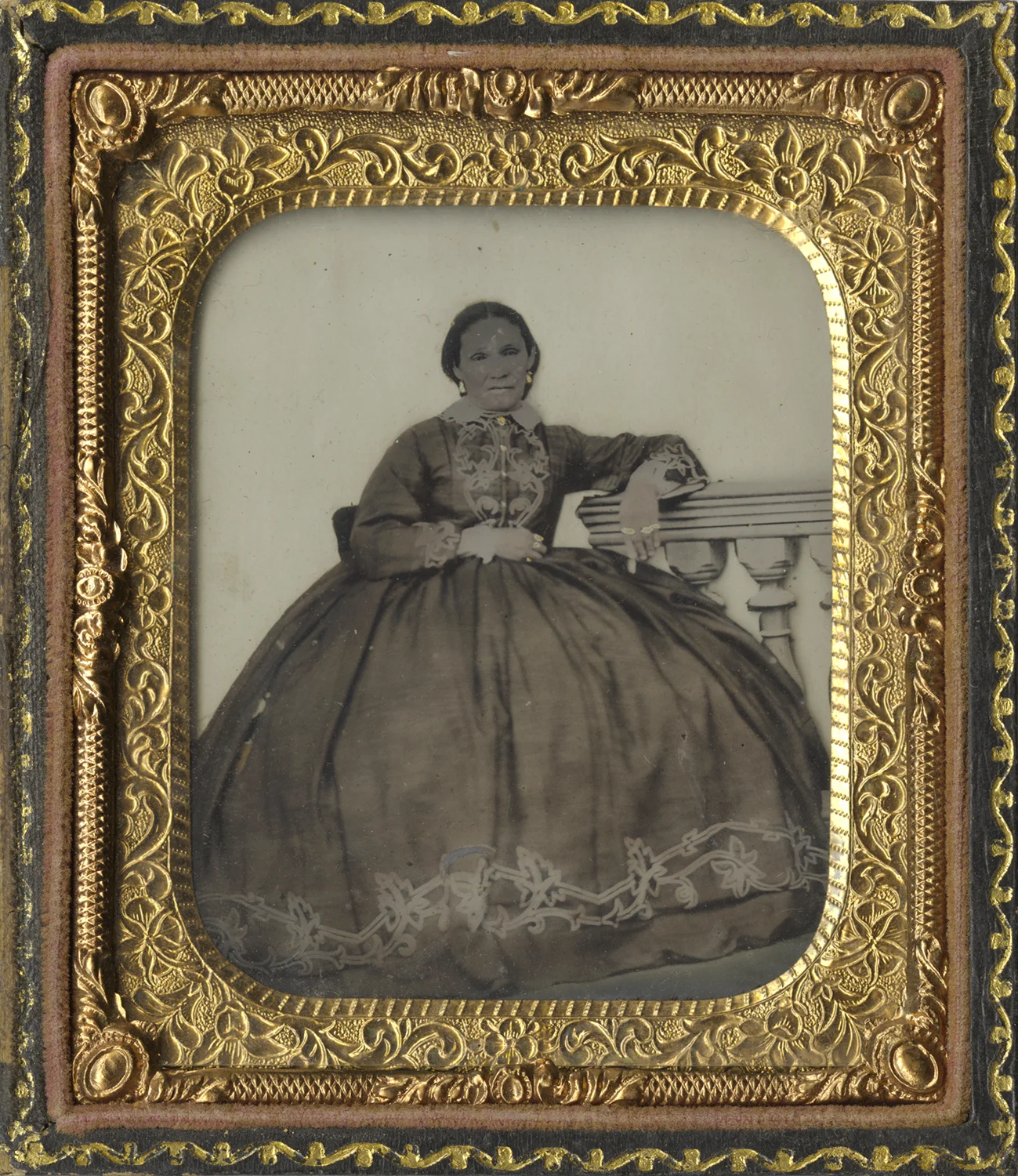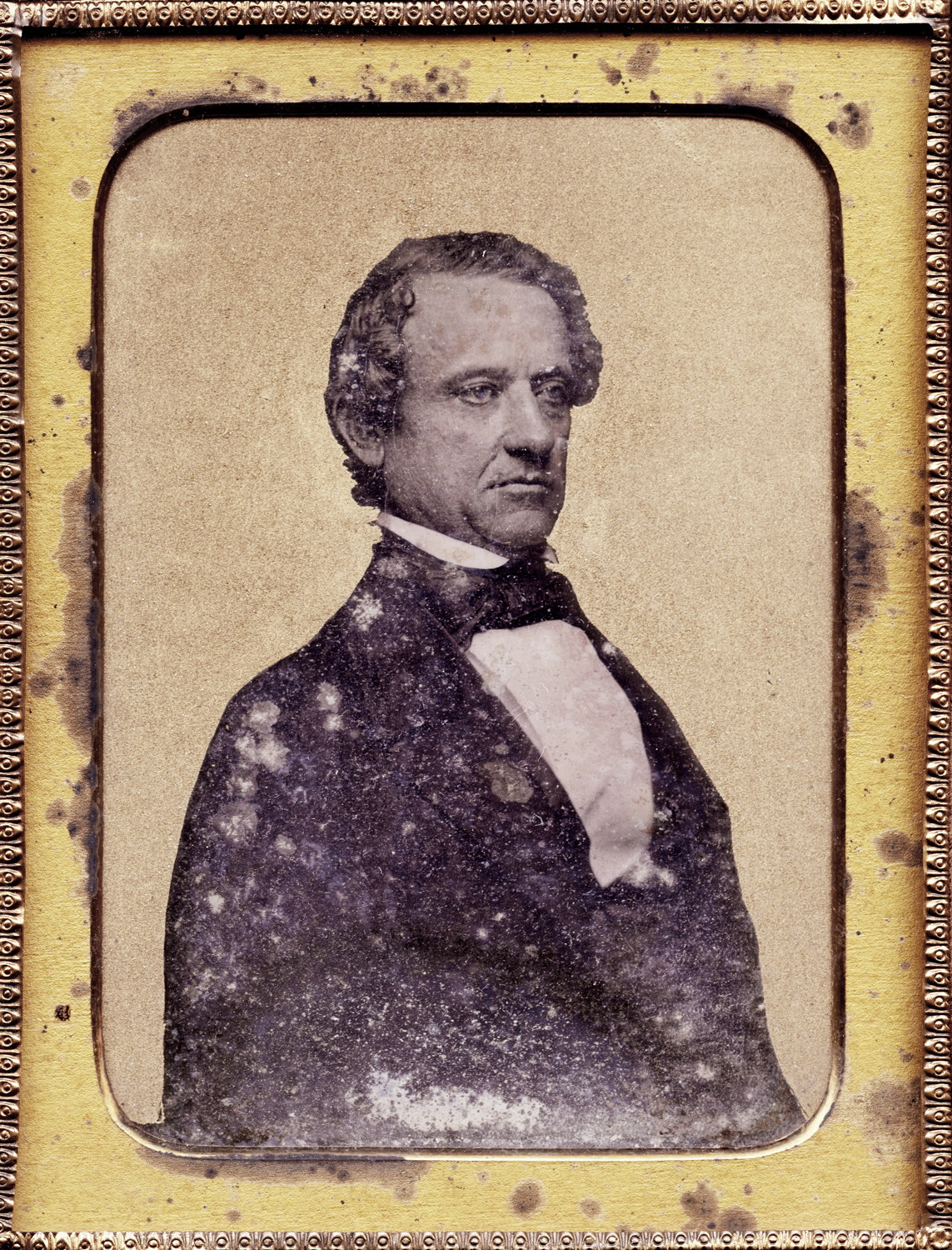The Relievo Collection
The ‘relievo’ ambrotype was introduced by a Glasgow photographer named Urie in 1854. An ambrotype was made in the usual way, but only the subject matter was varnished black (on the back side), and the whole background was carefully scraped away. Behind the picture was placed a piece of glass backed by white card. The photograph, being not quite in contact with the backing, cast a slight shadow on it, causing the figure to stand out in relief. It was doubtless due to the popularity of stereoscopic pictures that the idea of introducing relief by an ‘air space’ between picture and background was revived. In 1857 Thomas C. Lawrence, a Greenwich photographer, introduced relievo portraits in England.
The relievo technique was rather uncommon. Photo studios might have used this process in order to distinguish themselves from the competition, or offer a more unique product.
In this collection of 35 cased images there are a few examples of a particularly rare version of the relievo technique; a double ambrotype, which is a relievo ambrotype portrait mounted on top of a second ambrotype that serves as a background image. This was a 19th century version of super-imposing one photograph on top of another one, achieving not only a 3-dimensional quality, but the potential to give a studio portrait a specialized background. Additional variations on the relievo technique include portraits with hand-painted or other types of decorative backgrounds. While relievos are almost always ambrotypes, this collection includes one very unique daguerreotype portrait in which the background has been painted gold, isolating just the figure to give the illusion of relief.
Price on request.




































